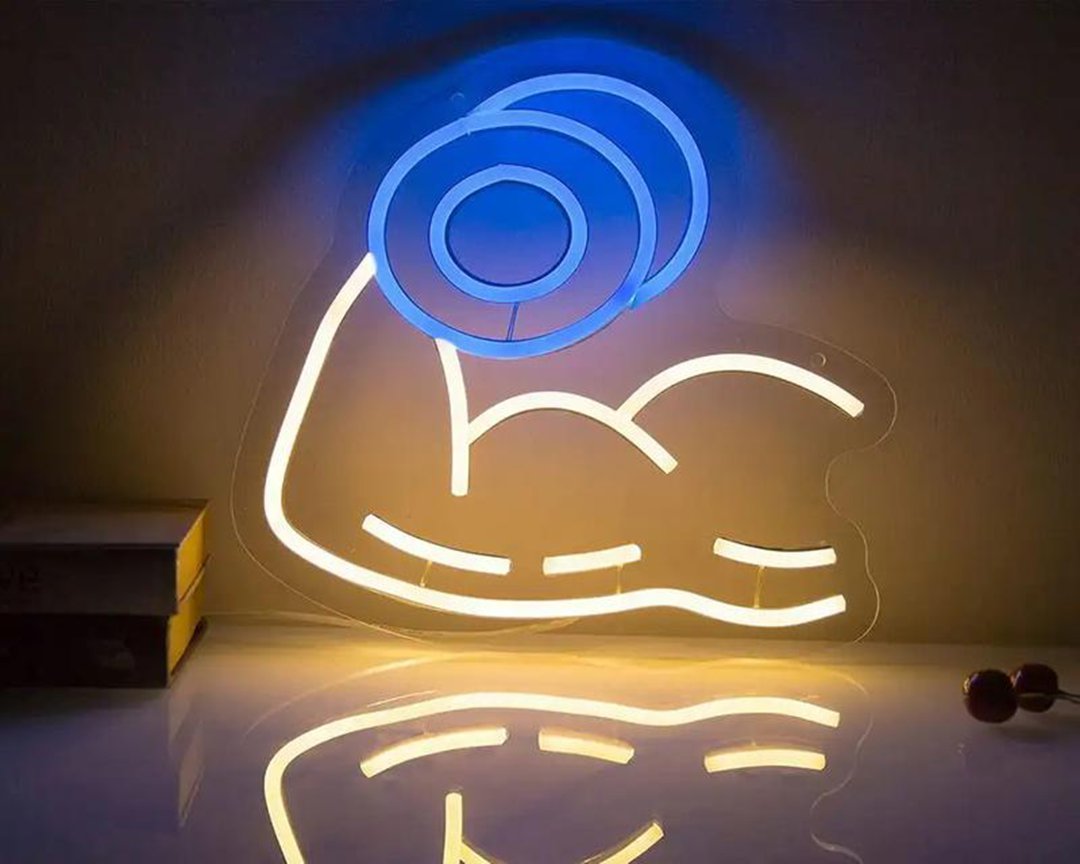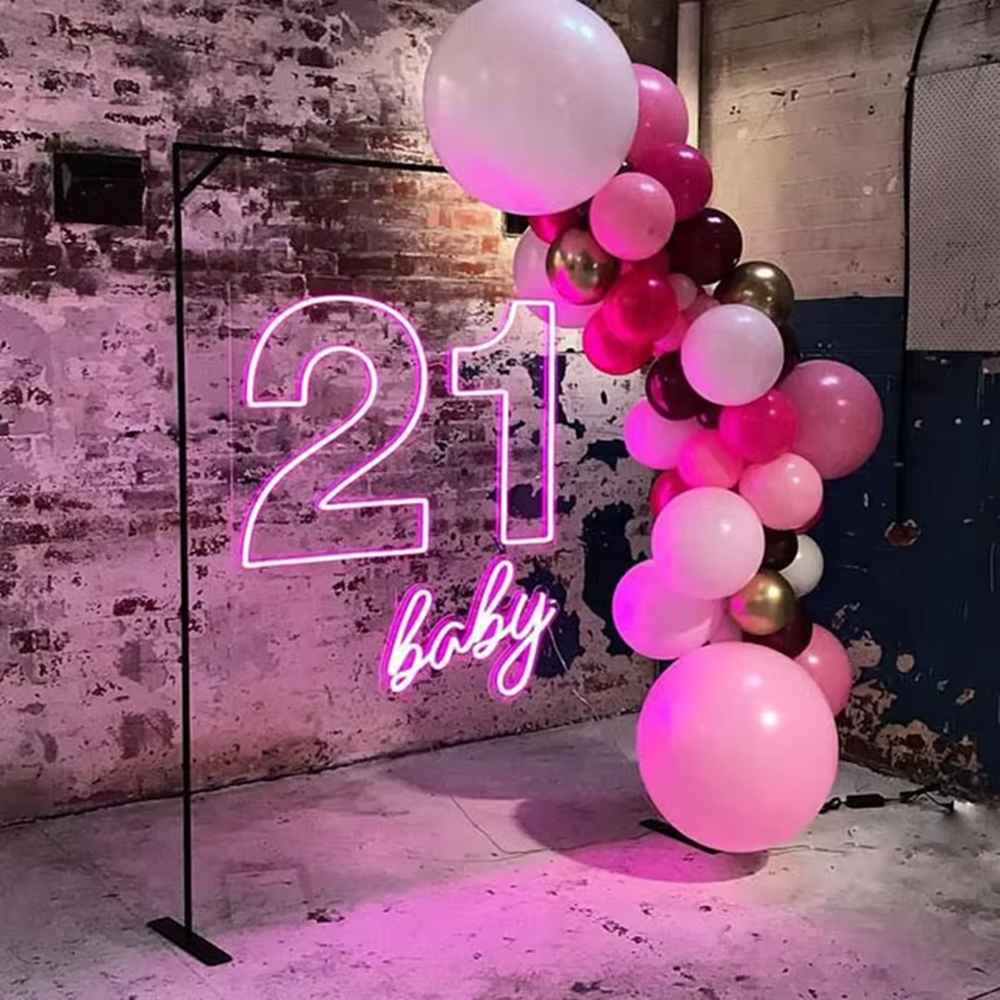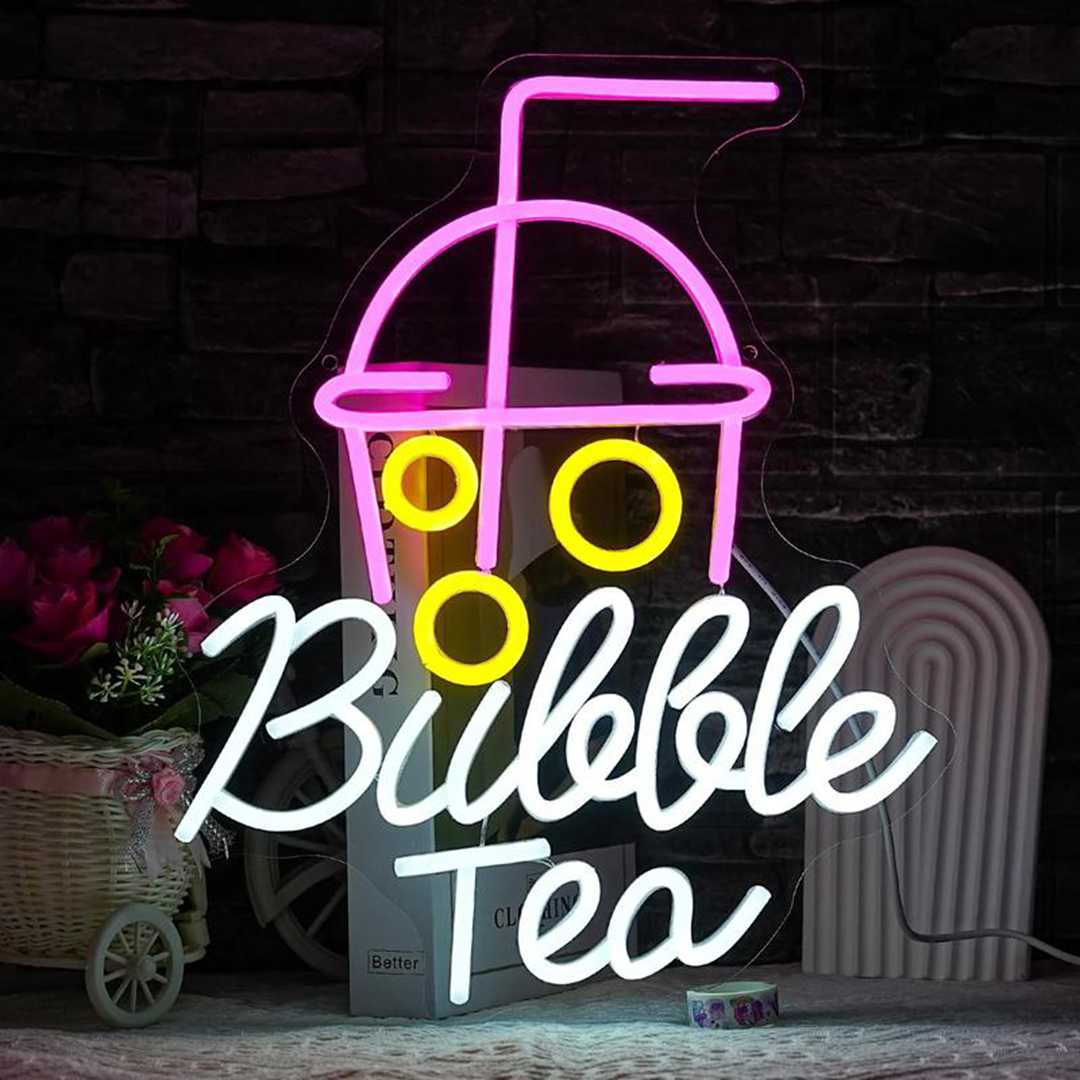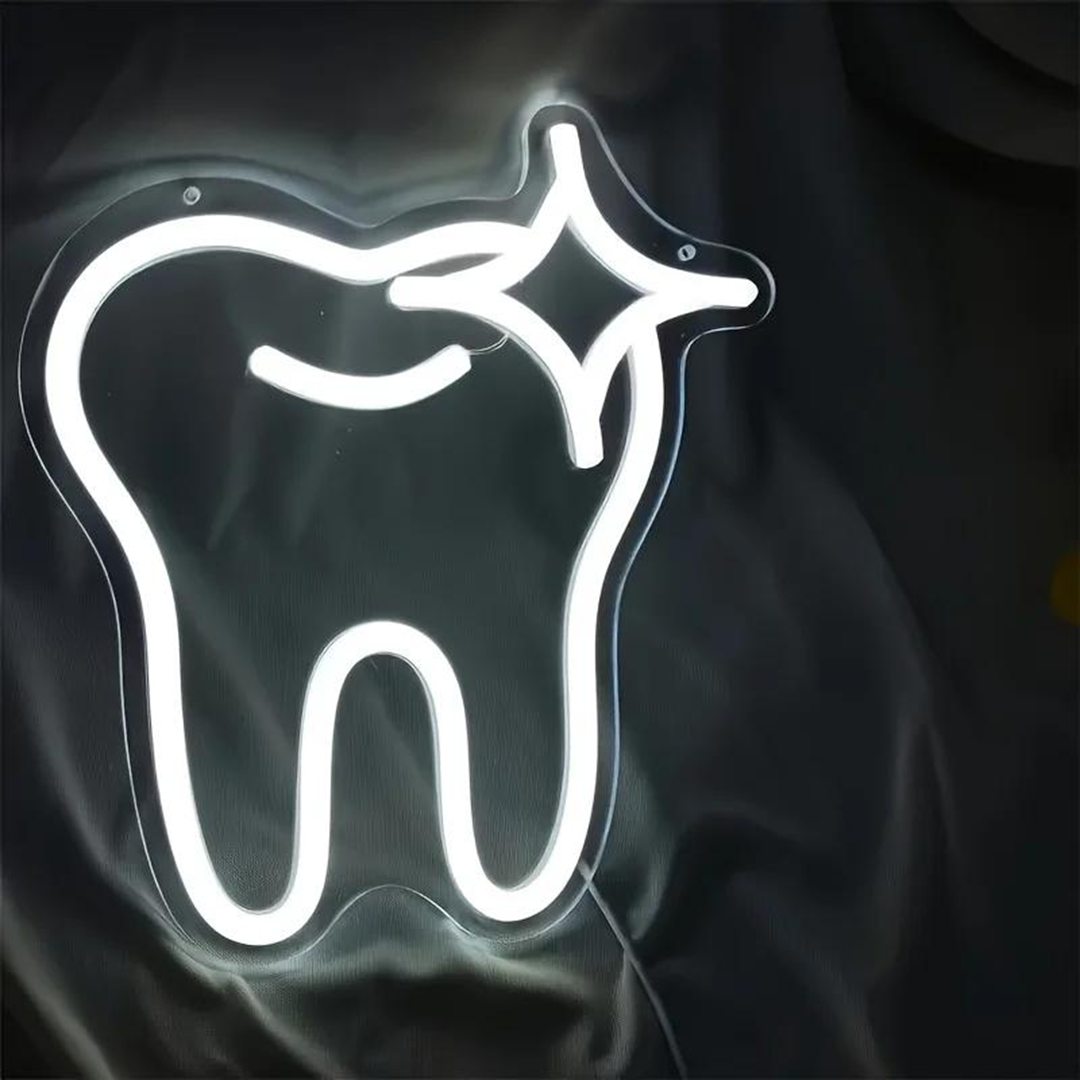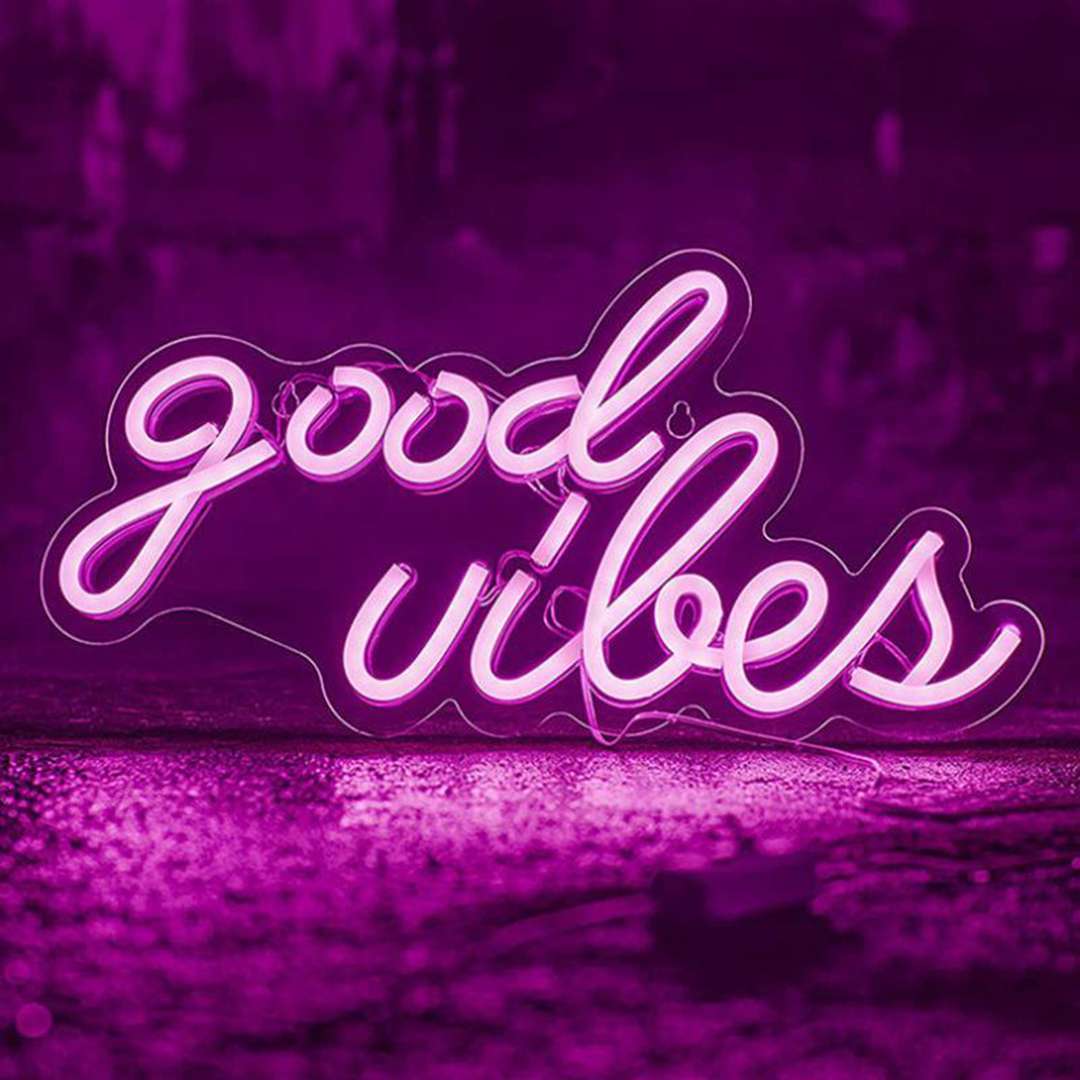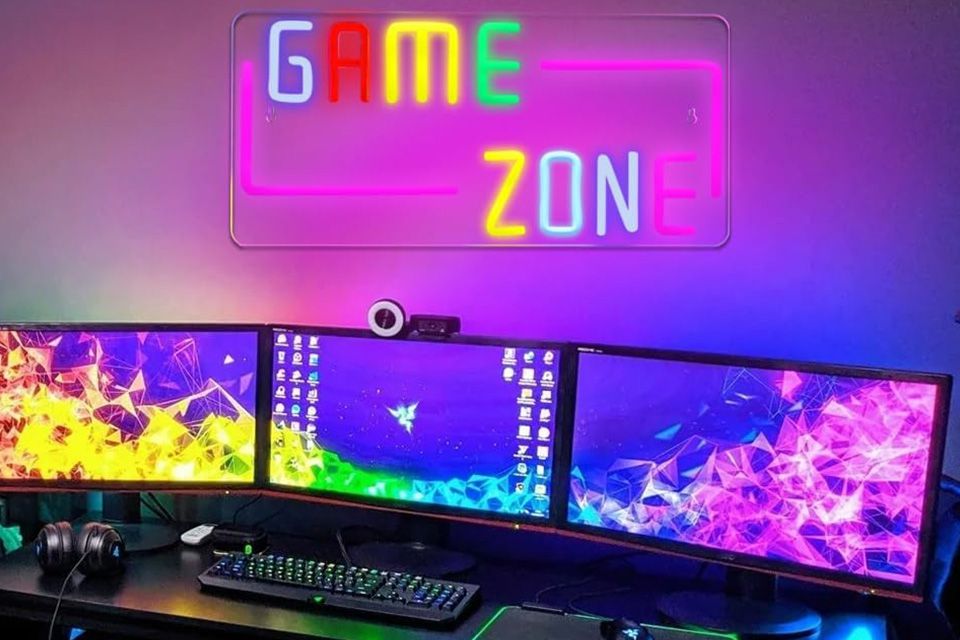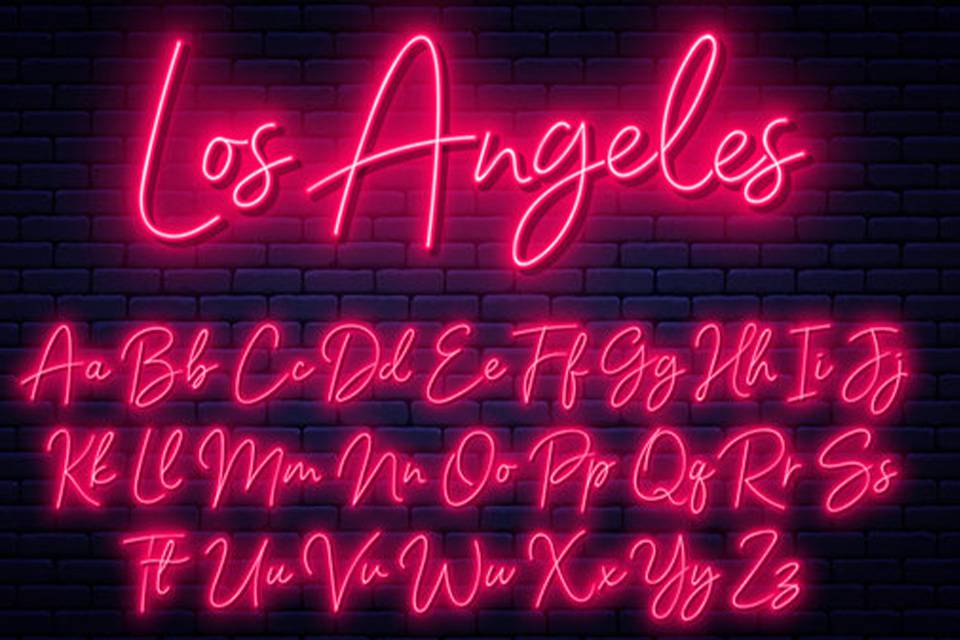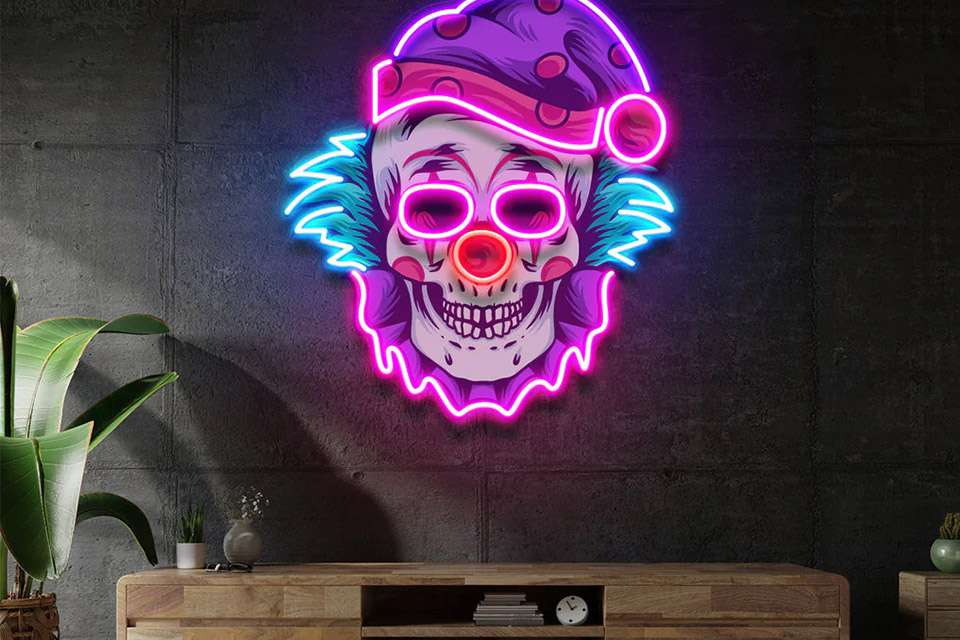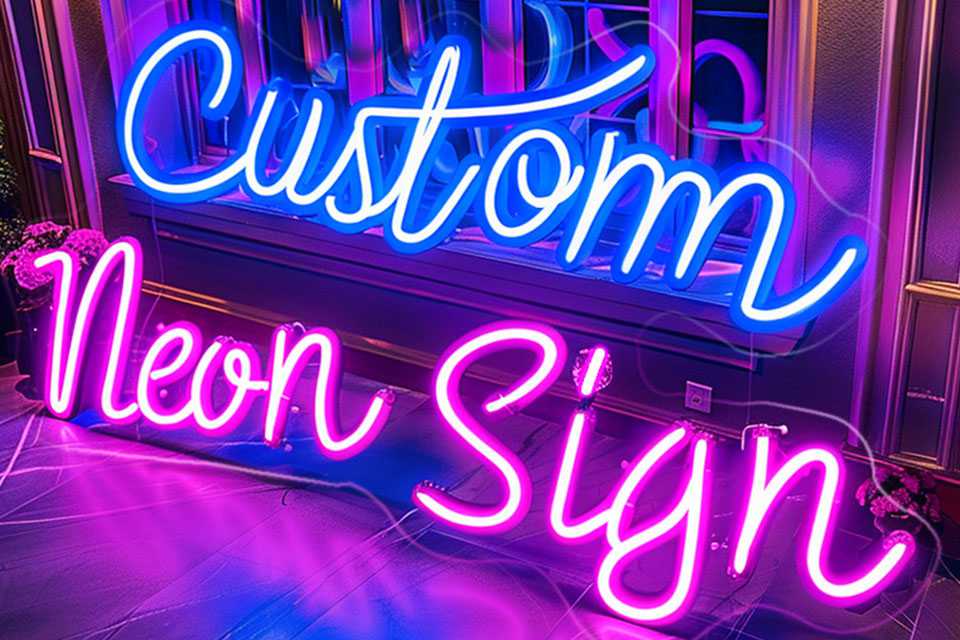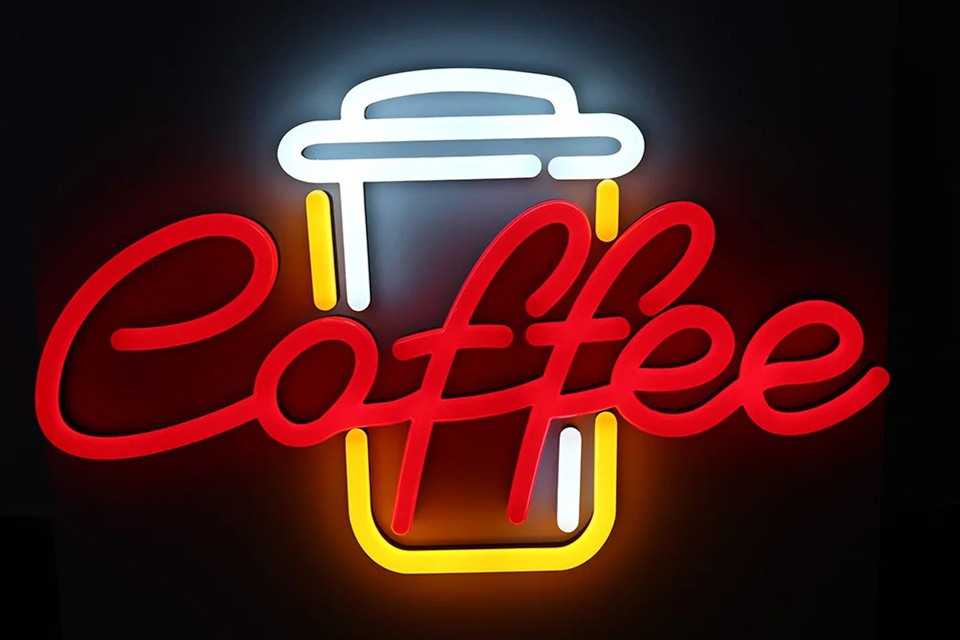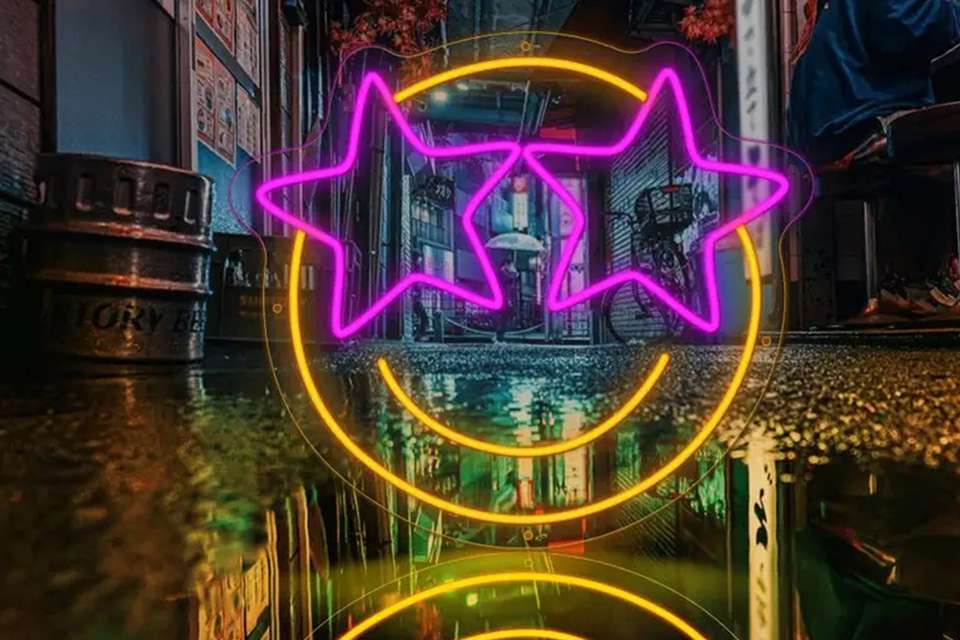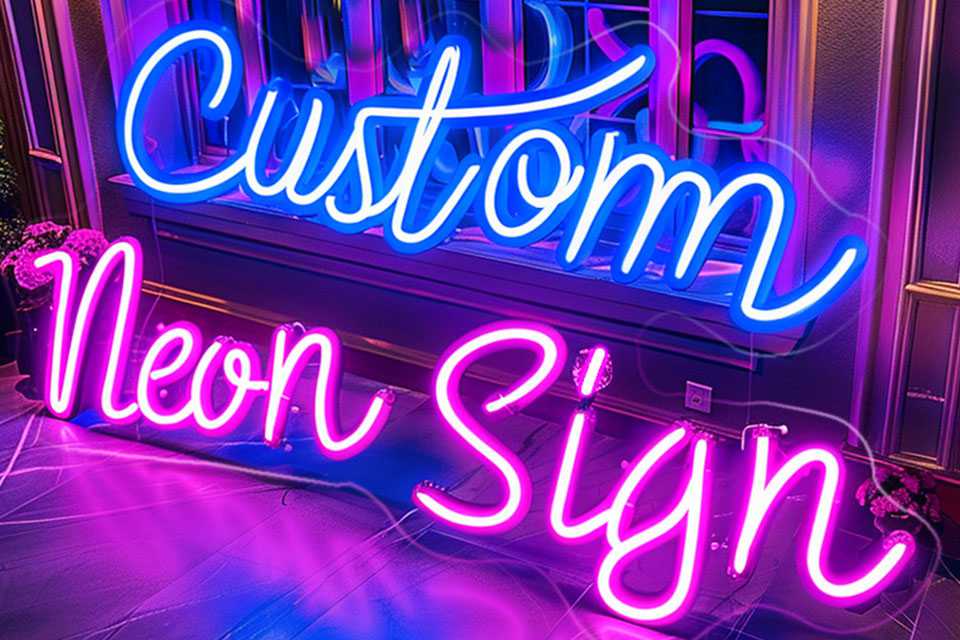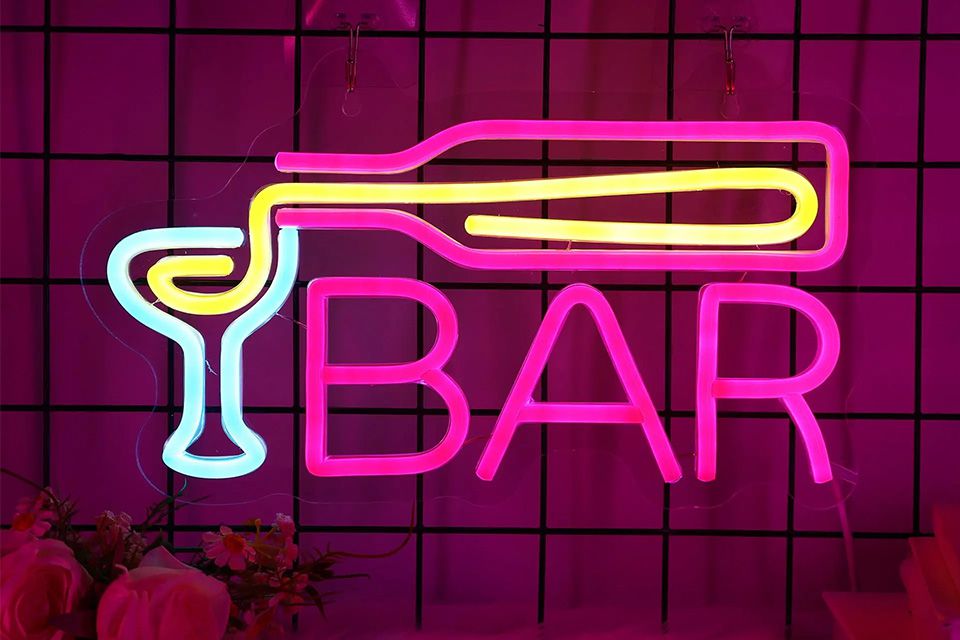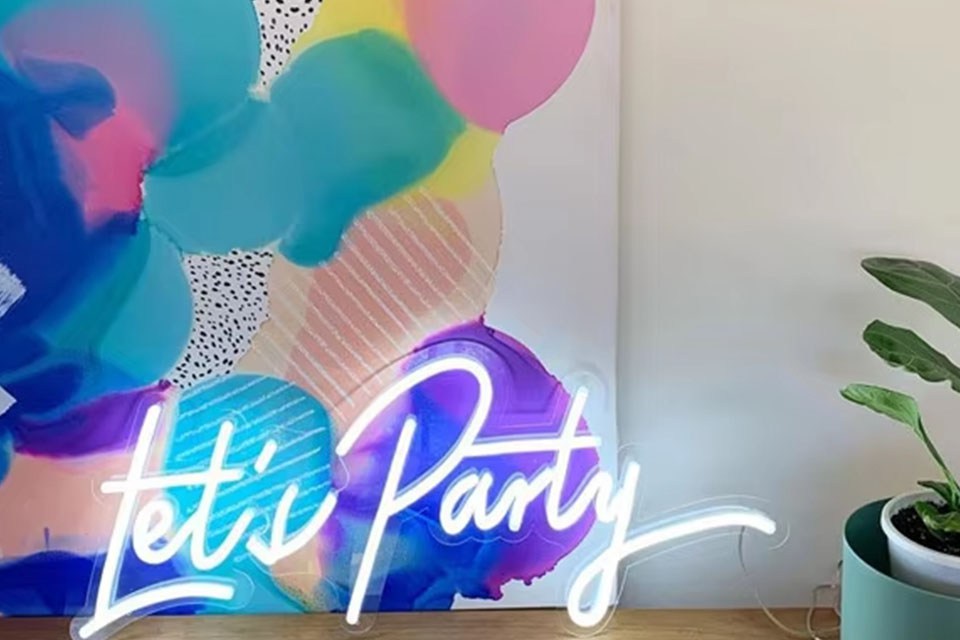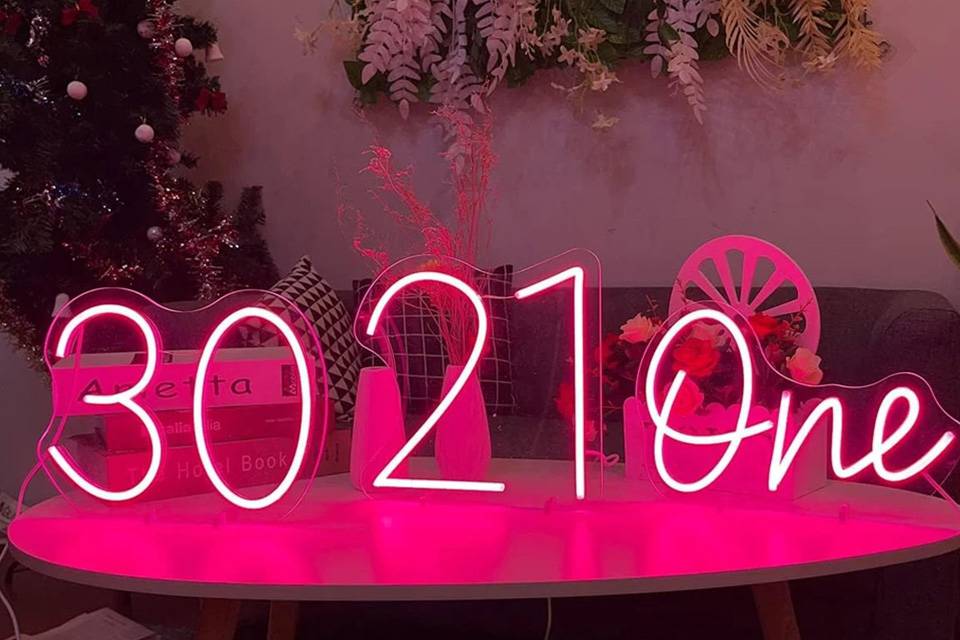
Videnskaben bag neonskilte: Gas og lys
Indholdsfortegnelse
This article explores the fascinating science behind neon signs, delving into how different Gasser create the vibrant Neonlys we see. Understanding the role of noble gas elements like Neongas, argon, and others in producing a variety of colors within a Glasrør is crucial for anyone interested in neonskiltning. This post is worth reading because it breaks down complex scientific concepts into easily digestible information, revealing the magic behind how neon lights are used and why they are so captivating. You’ll discover the specific gas used in Neonskilte and how passing an electric current through them brings these signs to life.

1. What Makes Neon Lights Glow?
Neonlys glow due to a process called gas discharge, which occurs when an electric current is passed through a gas-filled tube. Inside a neonskilt, den Glasrør is filled with a small amount of gas, typically a noble gas like neon eller argon. When electricity is applied, the gas atoms become excited. This means their electrons absorb energy and jump to higher energy levels.
As these excited electrons return to their normal state, they release energy in the form of light. This light emitted is what we see as the glow of a Neonlys. The specific color of the light produced afhænger af typen af gas used and the energy levels involved. This fascinating process is the fundamental science behind how neon lights work, turning electrical energy into colorful, eye-catching displays.
2. What is the Role of Neon Gas in Neon Signs?
Neon gas plays a crucial role in Neonskilte as it is responsible for producing the signature reddish-orange glow that many associate with these signs. When an electric current passes through a Glasrør filled with neon gas, den neon atoms become excited. As they return to their ground state, they emit a distinctive red-orange light. This bright, vibrant color is why Neongas was initially used in the first neon signs and remains popular today.
While pure Neongas produces a red glow, it can also be mixed with other Gasser to create a range of colors. However, the term “neonskilt” has become a general term for any gas-filled light display, even if it doesn’t contain neon. The unique properties of Neongas, such as its ability to emit a strong, consistent light, make it ideal for skiltning and decorative lighting, contributing to the iconic look of Neonskilte.
3. How Are Neon Signs Made?
Neonskilte er lavet through a meticulous process that involves bending glass tubes and filling them with specific Gasser. The process begins with crafting Glasrør into the desired shape or letters. Skilled artisans heat and bend the Glasrør to form intricate designs. Once the Glasrør is shaped, an electrode is attached at each end of the tube. The tube is then vacuum-sealed to remove any air.
Next, a small amount of gas—neon, argon, or a mixture—is introduced inside the tube. The type of gas used determines the color the neonskilt will emit. After the gas is added, a high-voltage electric current is passed through the Glasrør. This energizes the gas atoms, causing them to emit light. The combination of skilled craftsmanship and the precise science of gas discharge creates the vibrant, glowing Neonskilte we see in storefronts and displays.
4. What Other Gases Are Used in Neon Lights Besides Neon?
Besides Neongas, several other Gasser er used in neon lights to produce a variety of colors. Argon is one of the most common, often used in combination with a small amount of mercury to create a bright blue or green light. Helium produces a pink or orange light, while krypton kan emit a range of colors from greenish-yellow to pale violet. Xenon is used to produce a blue or lavender light and is also found in strobe lights and photography flashes.
Disse different gases each have unique properties that allow them to emit different colors when an electric current passes through them. Manufacturers can add helium eller krypton to lighting tubes to modify the hue and intensity of the light produced. By using various gases and mixtures, neonskilt makers can achieve a wide range of colors and effects, making each neonskilt unique. Neonlys are used not only for skiltning but also for decorative purposes, thanks to the versatility offered by these different noble gases.
| Gas | Color Produced | Additional Notes |
|---|---|---|
| Neon | Reddish-orange | Used in the original neon signs, produces a bright and distinctive red glow. |
| Argon | Blue, Green (with mercury) | Often combined with mercury to enhance brightness and produce a vibrant blue or green. |
| Helium | Pink, Orange | Produces a soft pink or orange glow, used to modify the hue of other gases. |
| Krypton | Greenish-yellow, Pale violet | Emits a range of colors, often used to create unique shades and effects. |
| Xenon | Blue, Lavender | Produces a cool blue or lavender light, also used in strobe lights. |
| Mercury | Bright Blue, Green (when combined with argon) | Added in small amounts to enhance brightness and produce vivid blue or green light. |
5. How Do Different Gases Produce Different Colors in Neon Signs?
Den different colors produced by Neonskilte are a result of the unique atomic structure of each gas used. When an electric current passes through a gas-fyldt Glasrør, the energy excites the electrons i gas atoms. As these electrons return to their normal energy levels, they release energy in the form of light. Each noble gas has a distinct set of energy levels, which determines the color of the light emitted.
For example, Neongas emits a characteristic red-orange light because its electrons release energy that corresponds to that part of the visible spectrum. Argon, when combined with a bit of mercury, typically emits a blue or green light. The addition of mercury vapor enhances the brightness and can shift the color. By using different gases or mixtures, Neonskilte can produce a wide variety of colors. This ability to manipulate light and color through the choice of gas is what makes Neonskilte so versatile and visually appealing.

6. What is the Role of Mercury in Neon Lights?
Mercury plays a significant role in enhancing the brightness and altering the color of Neonlys, particularly when used in conjunction with argon gas. In its vapor form, mercury emits a bright blue light when an electric current passes through it. When mercury vapor is combined with argon inside a Glasrør, the resulting light produced is a more intense and vibrant blue than argon alone can produce.
Adding mercury til Neonskilte also helps to increase their efficiency and lifespan. The mercury atoms help to facilitate the ionization process, making it easier for the electric current to excite the gas atoms. This results in a brighter belysning while using less energy. However, due to environmental and health concerns associated with mercury, its use in Neonlys is carefully regulated, and alternative methods are being explored to achieve similar effects without the risks. Neon or mercury vapor are essential based on the type of gas to create different hues.
7. How Does the Glass Tube Affect the Color of Neon Light?
Den Glasrør itself can influence the color of Neonlys in several ways. While the primary determinant of color is the type of gas inside the tube, the glass can be coated or colored to modify the light emitted. For instance, a clear Glasrør allows the true color of the gas to shine through, while colored glass tubes can alter the perceived hue of the light.
Additionally, the inner surface of the Glasrør can be coated with a phosphor powder. Phosphors absorb the ultraviolet light produced by excited gas atoms, such as mercury vapor, and re-emit it as visible light. Different phosphors can produce different colors, allowing for an even wider range of colors in Neonskilte. For example, a phosphor coating can transform the blue light from mercury og argon into green, yellow, or white light, depending on the desired effect. Manufacturers can add helium to the mercury or use krypton gas for safety lighting inde i neon light tube eller Glasrør.
| Component | Role in Neon Signs |
|---|---|
| Neon Gas | Produces the characteristic reddish-orange glow when an electric current passes through it. |
| Argon Gas | Often mixed with mercury to emit a blue or green light; helps in creating a variety of colors. |
| Helium | Used to produce pink or orange light; can be mixed with other gases to modify the hue. |
| Krypton | Emits a range of colors from greenish-yellow to pale violet; used for unique color effects. |
| Xenon | Produces a blue or lavender light; also used in strobe lights and photography flashes. |
| Mercury Vapor | Enhances brightness and produces a vibrant blue light; combined with argon for intense colors. |
| Glass Tube | Houses the gas and provides the structure for the sign; can be clear, colored, or coated with phosphors to modify the light emitted. |
| Phosphor Coating | Applied to the inside of the glass tube to absorb UV light and re-emit it as visible light in various colors. |
| Electric Current | Passes through the gas-filled tube, exciting the gas atoms and causing them to emit light. |
| Electrode | Attached at each end of the glass tube to conduct the electric current. |
8. Can the Color of a Neon Sign Change Over Time?
The color of a neonskilt can change over time due to several factors. One common reason is the gradual degradation of the phosphor coating inde i Glasrør. As the phosphor ages, its ability to emit light diminishes, which can result in a duller or altered hue. Additionally, impurities or leaks in the Glasrør can introduce other Gasser into the mixture, affecting the color and brightness of the Neonlys.
Another factor that can cause color changes is the depletion of the gas itself. While Neonskilte are designed to last for many years, the gas inside can slowly escape or react with the electrode materials, leading to a change in the gas composition. Regular maintenance and proper handling can help prolong the vibrancy and intended color of Neonskilte, ensuring they continue to belyse effectively over time.
9. What is the History Behind Neon Signs?
The history of Neonskilte dates back to the late 19th century when scientists began experimenting with gas discharge tubes. The first neon light was demonstrated in 1898 when neon was discovered in 1898 by British scientists Morris Travers and Sir William Ramsay. Neon gas was first isolated and identified as a noble gas, notable for its bright red-orange light when electrically charged. It wasn’t until 1910 that Georges Claude, a French engineer, developed the first true neon lamp.
Claude found that passing an electric current through a sealed Glasrør fyldt med Neongas produced a vibrant red glow. Claude’s invention quickly gained popularity, and by the 1920s, Neonskilte were being used for advertising and skiltning across the United States and Europe. The first commercial neon signs were installed in Paris, and the trend soon spread to major cities worldwide. Over the decades, Neonskilte became iconic symbols of urban nightlife and commerce. While Neonlys experienced a decline in popularity with the advent of cheaper and more energy-efficient lighting technologies, they remain a beloved form of artistic and commercial expression.

10. Frequently Asked Questions About Neon Lights and the Gases Used
What makes neon lights glow?
Neonlys glow due to the process of gas discharge. When an electric current passes through a gas-fyldt Glasrør, it excites the gas atoms, causing them to emit light. The color of the light depends on the type of gas used.
What is the role of neon gas in neon signs?
Neon gas produces the characteristic reddish-orange glow associated with Neonskilte. When excited by an electric current, neon atoms emit a bright red-orange light.
How are neon signs made?
Neonskilte er lavet by shaping Glasrør into the desired form, attaching electrodes to each end, removing the air, and filling the tube with a specific gas eller gas mixture. An electric current is then passed through the tube to illuminate the gas.
What other gases are used in neon lights besides neon?
Besides neon, other gases used in Neonlys inkludere argon, helium, kryptonog xenon. Each gas produces a different color when excited by an electric current. Argon is often mixed with mercury vapor to create blue or green light.
How do different gases produce different colors in neon signs?
Different Gasser have unique atomic structures with distinct energy levels. When excited by an electric current, the electrons in these atoms jump to higher energy levels and then release energy as they return to their ground state. The specific wavelengths of light emitted correspond to different colors.
What is the role of mercury in neon lights?
Mercury is used to enhance the brightness and modify the color of Neonlys. Mercury vapor emits a bright blue light and, when combined with argon, produces a more intense blue or green. It also helps improve the efficiency of the gas discharge process.
How does the glass tube affect the color of neon light?
Den Glasrør can be clear, colored, or coated with phosphors to alter the perceived color of the Neonlys. Colored glass filters the light, while phosphor coatings absorb UV light and re-emit it as visible light in various colors.
Can the color of a neon sign change over time?
Yes, the color of a neonskilt can change due to factors like the degradation of phosphor coatings, impurities or leaks in the Glasrør, and the gradual depletion or reaction of the gas inside.
What is the history behind neon signs?
Neonskilte were developed in the early 20th century, following the discovery of Neongas in 1898. Georges Claude created the first true neon lamp in 1910, and Neonskilte quickly became popular for advertising and skiltning.
Why are neon signs still popular today?
Despite advancements in lighting technology, Neonskilte remain popular due to their unique aesthetic appeal, vibrant colors, and the ability to create custom designs. They are often used in art, decor, and skiltning to evoke a sense of nostalgia and visual interest.
Konklusion
- Neonskilte glow through a process called gas discharge, where electricity excites gas atoms in a Glasrør, causing them to emit light.
- Neon gas produces a distinctive red-orange light and is a primary component in many Neonskilte.
- The creation of Neonskilte involves shaping Glasrør, filling it with gas, and applying an electric current.
- Besides neon, other Gasser like argon, helium, kryptonog xenon are used to produce a variety of colors.
- Different Gasser emit different colors due to their unique atomic structures and energy levels.
- Mercury enhances brightness and modifies the color, especially when combined with argon.
- Den Glasrør can be colored or coated with phosphors to alter the light emitted.
- The color of a neonskilt can change over time due to phosphor degradation, impurities, or gas depletion.
- Neonskilte were developed in the early 20th century and quickly gained popularity for their vibrant and eye-catching displays.
- Despite newer lighting technologies, Neonskilte remain popular for their unique aesthetic, customizable designs, and nostalgic appeal.

